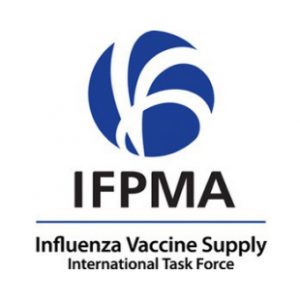2nd Asia-Pacific Influenza Summit
Date: 10-11 June 2015
Location: Melia Hotel, Hanoi, Viet Nam
APACI’s 2nd Asia-Pacific Influenza Summit was held in Hanoi, Viet Nam on 10-11 June 2015. Over 200 delegates from 33 countries attended the meeting.
Summit Dinner
Session 1. Seasonal influenza vaccine policy and implementation
Session 2. Why should influenza be a public health priority?
Session 3. Addressing needs for vaccinating at-risk groups
Session 4. APACI in the region
Session 5. Global partners in the region

Philippe Buchy. Human and animal surveillance in live bird markets in Cambodia demonstrating the intense circulation of several avian influenza subtypes including HPAI A(H5N1): Mutations on the HA associated to better adaptation to mammalian cells.
Summit Dinner
APACI achievements and challenges since the First Asia-Pacific Summit.
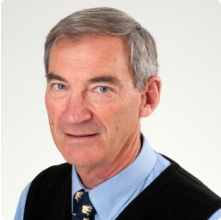
Clinical Associate Professor Lance Jennings. Director and Past Chairman, APACI. (New Zealand)
Lance Jennings QSO, PhD, FRCPath, FFSc(RCPA) is Clinical Virologist to the Canterbury District Health Board, Clinical Associate Professor in the Pathology Department, University of Otago, New Zealand, Fellow of the Royal College of Pathologists, London and a Founding Fellow of the Science Faculty, Royal Australasian College of Pathologists. His principal research interests include the diagnosis, epidemiology, prevention and treatment of influenza and other respiratory viral infections.
Dr Jennings has been instrumental in the development of influenza control strategies for New Zealand, including the introduction of free influenza vaccine, establishment of influenza awareness education (NISG) and pandemic planning. He is co-founder and ex chairperson of the Asia Pacific Alliance for the Control of Influenza (APACI). Dr Jennings has also been a member of WHO/Western Pacific Region Office (WPRO) Avian Influenza Outbreak Response (2004) and Expert Influenza (2005) teams in Asia and has held WHO short-term consultancies on measles and influenza in Asia and Europe.
He serves on several Ministry of Health and Ministry of Agriculture Advisory Committees, is an expert reviewer for research funding agencies, and is on the editorial board of the International Society for Influenza and other Respiratory Virus Disease (ISIRV) journal Influenza and other Respiratory Viruses. His service to virology in New Zealand and internationally was recognised in 2006 with the award of the Queens Service Order.
Session 1 Seasonal influenza vaccine policy and implementation
Policy development: vaccine efficacy and effectiveness.

Dr Alain Moren (France)
Dr Moren heads the Epidemiology department of EpiConcept, Paris, France. He is a medical epidemiologist (PhD), former US-CDC EIS officer, director of Médecins Sans Frontières (MSF) medical department, director of Epicentre, and coordinator of the European programme for intervention epidemiology training (EPIET). EpiConcept is coordinating various programmes aiming at measuring the effectiveness and impact of vaccines including the I-MOVE programme for monitoring influenza vaccine effectiveness in 20 European countries.
PresentationDevelopment and clinical evaluation of an avian influenza A(H5N1) vaccine at IVAC, Vietnam.
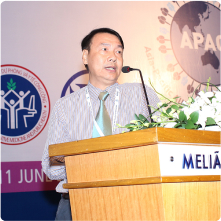
Dr Huong Vu Minh. (Viet Nam)
As Technical Director of PATH’s Mekong Program (based in Hanoi), Dr. Huong Vu leads PATH’s vaccine and immunization-related activities. He provides technical guidance for PATH Mekong Vaccine and Immunization Team in designing, managing, monitoring, and evaluating vaccine introduction and vaccine clinical trials in Vietnam. He also offers technical support to Immunization Programs in Laos, Cambodia and Myanmar in planning and introducing Japanese Encephalitis Vaccine. In addition to his ten year contribution at PATH, he worked for two years at the United Nations Population Fund (UNFPA) in Vietnam as National Program Officer, managing the reproductive health and health information system projects of UNFPA. Dr. Huong also spent six months at Plan International in Vietnam as Health Technical Advisor, providing technical assistance to field staff on implementation of reproductive health, HIV/AIDS, and primary and child health care projects. He started his career as lecturer in Hai Phong Medical School on public health. Dr. Huong earned his MD and PhD in medical epidemiology from Hanoi Medical School.
Abstract
Background: PATH has been providing technical support for the development of influenza vaccine in Vietnam, with a long and consistent history of collaboration with the Ministry of Health, the Institute of Vaccine and Medical Biologicals (IVAC), The Company for Vaccine and Biological Production Number 1 (VABIOTECH), the National Institute of Hygiene and Epidemiology, and the Pasteur Institute in Ho Chi Minh City (PIHCMC) since 2010. Most recently, PATH cooperated with IVAC and PIHCMC to complete a Phase I clinical trial to evaluate the safety profile and immunogenicity of two intramuscular doses of inactivated A/H5N1 whole virion, aluminum adsorbed influenza vaccine (IVACFLU-A/H5N1) in healthy adults.
Methodology: This Phase 1, double-blind, randomized, placebo-controlled trial was conducted with 76 healthy adults, 18 to 30 years of age (32 high dose: 15 mcg HA/0.5 ml; 32 low dose: 7.5 mcg HA/0.5 ml; and 12 placebo: PBS). Each subject was injected with two doses 21 days apart. The vaccine safety profile was measured by monitoring (1) immediate reactions within 60 minutes of administration of any doses, (2) adverse events (AE) commonly associated with intramuscular injection (solicited local and systemic reactions) from 60 minutes to seven days, (3) all other AEs following any dose including clinical findings and abnormal laboratory findings from blood specimens collected on days 7 and 28, and (4) all serious adverse events (SAE) within three weeks of receipt of any dose. The vaccine’s immunogenicity was evaluated through (1) the proportion of subjects achieving HAI titer ≥ 1:40, (2) the proportion of subjects achieving a four-fold rise in HAI between doses and from baseline to post injection two, (3) GMT of HAI/MNT after each dose, and (4) GMT of HAI/MNT antibody between doses and from baseline to post injection two.
Results: Safety Profile: No subjects in either the placebo or vaccine cohorts experienced any AEs (based on vital signs, local, and systemic reactions) within 60 minutes after administration of each dose. The frequencies of solicited local and systemic AEs occurring from 60 minutes through 7 days after any dose were similar to those of licensed H5N1 vaccines. Abnormal tests on subjects between day 0 and 28 were assessed to be of non-clinical significance. No death or other SAEs occurred. Immunogenicity: The proportion of subjects with an HAI titer ≥ 1:40 after the second dose of low dose and high dose was 42% and 56%, respectively. The GMT ratio of HAI antibody from baseline to post-injection two of low dose and high dose was 4.9 and 5.4 respectively, and the proportion of subjects achieving a four-fold rise in HAI titer of low dose and high dose from baseline to post-injection two was 68% and 72%, respectively.
Conclusion: Both low and high doses of IVACFLU-A/H5N1 showed similar a safety profile as with other licensed influenza A/H5N1 vaccines. The high dose of 15mcg/0.5ml was initially more immunogenic based on the results of HAI and MNT assays, and thus was recommended for further study in the next trial phase.
PresentationCost-effectiveness of influenza vaccines: considerations for competing resources.
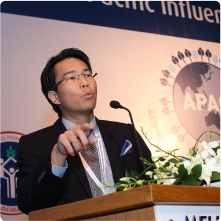
Associate Professor Vernon Lee. (Singapore)
A/Prof Vernon Lee is a preventive medicine physician and adjunct Associate Professor at the Saw Swee Hock School of Public Health, National University of Singapore. He is also Head of the Singapore Armed Forces Biodefence Centre, and Deputy Director for Communicable Diseases in the Ministry of Health, Singapore.
He was previously Advisor to the Assistant Director General for Health, Security and Environment at the World Health Organization headquarters; and Medical Epidemiologist in the WHO Office in Indonesia.
A/Prof Lee graduated from medical school at the National University of Singapore, and also holds a PhD in epidemiology from the Australian National University, and the Master in Public Health and Master of Business Administration degrees from the Johns Hopkins University, USA.
Abstract
As countries consider influenza vaccination in their routine immunisation programs, the cost-effectiveness of these vaccines needs to be considered before implementation. Cost-effectiveness evaluation is important due to scare national resources and competing health priorities, and must be done in the local context to consider the local disease impact, vaccine efficacy, cost and different payer perspectives. It needs to consider not only the direct healthcare costs of influenza illness, but also the indirect and intangible economic costs. This presentation explores the principles of cost-effectiveness evaluation, and the various considerations that policy makers have to make in evaluating the use of a vaccine. It also presents the existing cost-effectiveness studies that have been done in various countries across various age and risk groups, and discusses how countries can make use of this data for their policy planning.
PresentationSession 2. Why should influenza be a public health priority?
Mortality and morbidity estimates for in infection in Asia-Pacific countries.
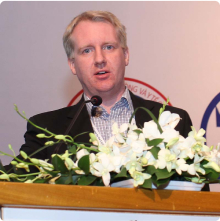
Dr Ben Cowling. (Hong Kong)
Dr Cowling joined the School of Public Health at HKU in 2004. Prior to moving to Hong Kong, he graduated with a PhD in medical statistics at the University of Warwick (UK) in 2003, and spent a year as a postdoc at Imperial College London (UK). Dr Cowling has been the Head of the Division of Epidemiology and Biostatistics since 2013, he is responsible for teaching introductory modules in epidemiology and biostatistics on the MPH curriculum, and his primary research focus is in infectious disease epidemiology.
In recent years Dr Cowling has designed and implemented large field studies of influenza transmission in the community and the effectiveness and impact of control measures. His research aims to integrate information on transmission dynamics at the individual level with disease burden, severity and dynamics at the population level. His latest research has focused on the modes of respiratory virus transmission, influenza vaccine effectiveness, and the potential causes and implications of interference between respiratory viruses. He has strong links with China CDC, and the NIGMS-funded Harvard Center for Communicable Disease Dynamics.
Abstract
Influenza viruses cause disease in all age groups, and severe disease particularly in the extremes of age. I reviewed studies that reported population-based estimates of influenza-associated hospitalizations and excess mortality. To allow comparison with other countries, rates were directly standardized to the World Standard Population. There was heterogeneity in age-standardized excess all-cause mortality rates based on reports from various Asia-Pacific countries, with age-standardized estimates between 5 and 8 deaths per 100,000 persons per year. The burden of influenza is substantial in Asia Pacific countries, although most data come from a small number of locations. Further studies are needed to characterize more fully the burden of influenza in Asia Pacific countries.
PresentationSession 3. Addressing needs for vaccinating at-risk groups
Do quadrivalent seasonal influenza vaccines provide added benefits for at risk groups in Asia?
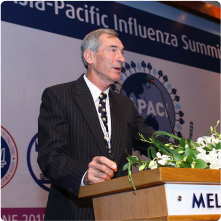
Clinical Associate Professor Lance Jennings. (New Zealand)
Lance Jennings QSO, PhD, FRCPath, FFSc(RCPA) is Clinical Virologist to the Canterbury District Health Board, Clinical Associate Professor in the Pathology Department, University of Otago, New Zealand, Fellow of the Royal College of Pathologists, London and a Founding Fellow of the Science Faculty, Royal Australasian College of Pathologists. His principal research interests include the diagnosis, epidemiology, prevention and treatment of influenza and other respiratory viral infections.
Dr Jennings has been instrumental in the development of influenza control strategies for New Zealand, including the introduction of free influenza vaccine, establishment of influenza awareness education (NISG) and pandemic planning. He is co-founder and ex chairperson of the Asia Pacific Alliance for the Control of Influenza (APACI). Dr Jennings has also been a member of WHO/Western Pacific Region Office (WPRO) Avian Influenza Outbreak Response (2004) and Expert Influenza (2005) teams in Asia and has held WHO short-term consultancies on measles and influenza in Asia and Europe.
He serves on several Ministry of Health and Ministry of Agriculture Advisory Committees, is an expert reviewer for research funding agencies, and is on the editorial board of the International Society for Influenza and other Respiratory Virus Disease (ISIRV) journal Influenza and other Respiratory Viruses. His service to virology in New Zealand and internationally was recognised in 2006 with the award of the Queens Service Order.
PresentationThe interface of non-communicable and infectious diseases: Influenza, pneumonia and vaccination.
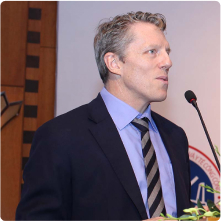
Dr Mark Simmerman. (Thailand)
Mark Simmerman earned a Master of Science from the University of Kansas Medical Center in 1994, and a PhD in International Health and Development from the Tulane University School of Public Health and Tropical Medicine in 2006. Dr. Simmerman was a commissioned officer with the United States Public Health Service for 20 years and worked for the US CDC in Southeast Asia from 2001-2010. He has diverse professional experience that includes clinical practice, administration of public-health programs, and infectious disease epidemiology.
Dr. Simmerman’s primary research interest has focused on the burden and control of influenza in East and Southeast Asia. Dr. Simmerman has been a leading voice for improved disease burden research, systematic laboratory-based surveillance, and expanded use of influenza vaccination in the region. He has published many scientific articles and frequently speaks at international conferences. Following his retirement from the CDC in April 2010, Dr. Simmerman joined Sanofi Pasteur as Regional Director for Epidemiology and Medical Affairs in the Asia-Pacific Region.
PresentationSession 4. APACI in the region
Disease burden, vaccine coverage and policy development in China.
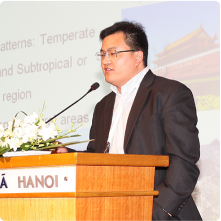
Dr Luzhao Feng. (China)
Chief, Branch of Respiratory Infectious Diseases, Division for Infectious Diseases, Chinese Center for Disease Control and Prevention (China CDC).
Dr. Feng is charged with developing and supervising China’s respiratory infectious disease surveillance systems, including seasonal and novel influenza viruses, and other respiratory infections. He is also responsible for the development of China’s national strategy for control and prevention of respiratory infectious diseases.
His research interests include the epidemiology, disease burden, transmission dynamics, and surveillance of infectious diseases such as seasonal and avian influenza, pneumococcal and Hib diseases. His research on vaccines for these diseases, including their efficacy, effectiveness, and cost effectiveness, aims to help develop immunization services and evidence-based vaccination recommendations and policy.
PresentationActivity report: Meeting on vaccine advocacy, in particular influenza, and progress made in India.

Dr OP Sharma. (India)
Dr O. P. Sharma is a consultant physician with special interest in Geriatrics. He is the National Professor of Geriatrics and General Secretary of the Geriatric Society of India. He has conceptualized, edited & produced the first text book in India on Geriatrics ”Geriatric Care”. He is the editor of “Indian Guidelines of Vaccination in Older Adults”. In addition, he is a Founder Fellow of the Indian College of Physicians, Geriatric Society of India and
International College of Nutrition. He is also a Fellow of the IMA College of General Practitioners, IMA Academy of Medical Specialties, International Academy of Medical Specialties, Indian Academy of Clinical Medicine and the Royal College of Physicians of Edinburgh.
PresentationCultural differences and vaccine advocacy.

Dr Cornelia Betsch. (Germany)
Dr. Cornelia Betsch is a psychologist at the University of Erfurt. She is Research Fellow and scientific manager of the Center for Empirical Research in Economics and Behavioral Science (CEREB) at the University of Erfurt , Germany. At Erfurt University she founded an interdisciplinary network on health research. She serves as a member of the European Technical Advisory Group of Experts on Immunization ( ETAGE ) of the WHO Europe and as a member of the German Commission for the Verification of Measles and Rubella Elimination (Federal Ministry of Health @ Robert Koch Institute).
Her research interests are in the field of social and individual aspects of health and medical decision making, such as in vaccine decision making and the prudent use of antibiotics.
Abstract
Human cognition differs according to the cultural context. Cross-cultural psychology has repeatedly shown that individuals from Western cultures, such as the US or most parts of Western Europe, construct their selves as individualistic, they focus rather on individual than on the social benefit (individualism). Individuals from Eastern cultures, such as South East Asians, see themselves more as a part of a group and focus on collective rather than individual gains (collectivism). If we look at vaccination as having both individual and social benefits – due to the direct and indirect effects of most vaccinations – these psychological differences lead to the hypothesis that vaccine advocacy could profit from using different strategies in different cultural settings. This project therefore focused on two basic questions: Will communicating the social benefit of vaccination have different effects in Asian vs. Western cultures? Will interventions to raise health care workers’ vaccination uptake be equally effective across cultures?
We conducted two studies to examine cultural differences in the effectiveness of interventions, which intended to raise vaccine intentions. In the first study we presented participants with information about herd immunity and either stressed the individual benefit (“You will be protect by the vaccinated people around you”) or the social benefit (“you will protect other people who are not vaccinated”). It was hypothesized that communicating the social benefit would be more successful in Asian cultures. Participants from Hong Kong, South Korea, India, Germany and the US took part in the study. However, we observed overall very high vaccination intentions in Asian countries and no effect of the communication measures; in Western countries we found lower intentions and a stronger effect of communication. Communicating the social benefit increased the intention to vaccinate. In the second study we applied a game-theoretical approach. In an interactive game the players took the role of health care workers who faced a vaccination dilemma: vaccination had no individual benefit, but it had social benefit by protecting their patients from illness. Vaccination was related to some costs, so that from an individual rational point of view, non-vaccination was the optimal solution – unless social benefit was also seen as an important outcome of the vaccination. Participants from the US and South Korea took part in the study. In this setting we found nearly full vaccination in the South Korean Setting. The manipulation, which compared an opt-in vs. opt-out strategy, therefore had no effect in the Asian, but a large effect in the Western setting: there was a higher inclination to vaccinate if people had to opt out from a predetermined vaccination appointment than when they had to opt in. Further mediation analysis revealed that people in South Korea vaccinated more because they perceived that vaccination has a social benefit and because they felt higher self-efficacy in getting the vaccine.
In sum, the project reveals that in Asia vaccination intentions were generally higher. This also led to the effect that in Asia it was difficult to change behavior or behavioral intentions (ceiling effect). We also conclude that strategies that are successful in Western cultural settings (such as communicating the social benefit, or changing from opt-in to opt-out policies) may not work likewise in Asian settings. Nevertheless, infection and infection control seems to be a more social issue in Asia; this supports the idea that communicating not only the individual, but also the social benefits of vaccination, can have additional benefits.
PresentationSession 5. Global partners in the region
ISIRV objectives and programmes for Asia.

Clinical Associate Professor Lance Jennings. (New Zealand)
Lance Jennings QSO, PhD, FRCPath, FFSc(RCPA) is Clinical Virologist to the Canterbury District Health Board, Clinical Associate Professor in the Pathology Department, University of Otago, New Zealand, Fellow of the Royal College of Pathologists, London and a Founding Fellow of the Science Faculty, Royal Australasian College of Pathologists. His principal research interests include the diagnosis, epidemiology, prevention and treatment of influenza and other respiratory viral infections.
Dr Jennings has been instrumental in the development of influenza control strategies for New Zealand, including the introduction of free influenza vaccine, establishment of influenza awareness education (NISG) and pandemic planning. He is co-founder and ex chairperson of the Asia Pacific Alliance for the Control of Influenza (APACI). Dr Jennings has also been a member of WHO/Western Pacific Region Office (WPRO) Avian Influenza Outbreak Response (2004) and Expert Influenza (2005) teams in Asia and has held WHO short-term consultancies on measles and influenza in Asia and Europe.
He serves on several Ministry of Health and Ministry of Agriculture Advisory Committees, is an expert reviewer for research funding agencies, and is on the editorial board of the International Society for Influenza and other Respiratory Virus Disease (ISIRV) journal Influenza and other Respiratory Viruses. His service to virology in New Zealand and internationally was recognised in 2006 with the award of the Queens Service Order.
PresentationThe Global Action Plan for influenza vaccines.
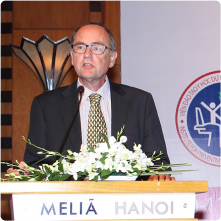
Mr Jan Hendriks. (Switzerland)
Mr. Jan Hendriks is seconded to the World Health Organization by the Netherlands Government since 2013, where he is the project manager of the WHO Global Action Pan for Influenza Vaccines (GAP). Biologist and immunologist by education, he has previously worked extensively in vaccine technology transfer programs in various low and middle income countries. He is (co)-author of around 50 peer-reviewed papers in the field of infectious diseases, vaccinology and international cooperation.
Abstract
The WHO Global Action Plan on Influenza Vaccines (GAP) started as a global multi-partner initiative in 2006 in conjunction with the Pandemic Influenza Preparedness Framework. GAP addresses the “vaccine part” of the international pandemic response which incorporates the virus/benefit sharing principle through promotion of equitable geographical distribution in pandemic vaccine production capacity. The GAP aims at ensuring the protection of all populations worldwide through vaccination in the event of an influenza pandemic.
Three main objectives are being pursued: (1) increase in evidence-based seasonal influenza vaccine use, considered to be a necessary pre-requisite to achieve global pandemic preparedness, (2) increase of global pandemic vaccine production capacity, amongst others through capacity building via technology transfer in low and middle income counties, including Viet Nam and (3) promote research and development of new influenza vaccines that are better and that can be produced faster and in sufficient quantities.
Since the initiation of the GAP significant progress has been made in all main objectives: seasonal vaccine uptake has been on the increase in Latin America and globally the number of countries with a policy on influenza use has increased to 165, although against this overall increase a decrease in seasonal vaccine distribution in Europe is reported by international influenza vaccine manufacturers; potentially associated with increasing vaccine hesitancy. In 2012, WHO recommended to vaccinate pregnant women which has been followed by many countries. Seasonal vaccine production capacity has nearly tripled since the start of GAP and this capacity is now spread across a larger number of countries. This global capacity would still fall short in case of a pandemic however, in particular if 2 doses would be needed to protect from disease. While there has been a wealth of developments in improved influenza vaccines including recombinant vaccines, low-dose adjuvanted vaccines, and new live attenuated influenza vaccines being approved, the long term objective of broadly cross-reactive ‘universal’ influenza vaccines still remains several years away.
The ambitious target originally set is turning out to be difficult to reach with the existing technology and the world will not be protected against a pandemic threat with the current arsenal of available vaccines. The experience obtained till date in low and middle income countries show that establishing and maintaining a sustainable influenza vaccine manufacturing facility is a challenge and requires not only technical know-how and infrastructure, but also a seasonal market and above all coherence in national policies on health, regulatory oversight, industrial and science and technology development.
From this perspective, the GAP experience in Viet Nam is encouraging. Since 2006, WHO has with BARDA and PATH supported the Institute of Vaccines and Medical Biologicals (IVAC) in Nha Trang in establishing pandemic and seasonal influenza vaccine capacity, which recently led to important milestones as will be reported by others in this meeting. Viet Nam is a highly populated country with a track record on developing and producing vaccines for its own population, as exemplified by the development and licensing of an oral cholera vaccine. On the regulatory side, Viet Nam made efforts to improve the National Regualtory Authority (NRA) to international standards and a recent WHO assessment of the NRA concluded that it is close to being fully competent. Viet Nam is on the way to build with international partners a pandemic influenza preparedness strategy that includes indigenous influenza vaccine manufacturing that can be sustainable, subject to a yet-to-be established seasonal influenza vaccination policy.
PresentationDisparity between influenza vaccination recommendations and vaccine distribution/uptake.

Dr Bram Palache. (The Netherlands)
Dr Palache received his PhD at the Erasmus University in Rotterdam and has extensive experience in the pharmaceutical industry with particular reference to the influenza vaccine. He has co-authored over 60 scientific papers and a textbook on influenza which has been translated into 6 languages. In 1993 he co-founded European Scientific Working group on Influenza (ESWI), served on its Executive Board and since 2010 has served as advisor to the group. In 2002 Dr Palache co-founded the IFPMA-Influenza Vaccine Supply International Task Force (IFPMA-IVS) as an industrial stakeholder for global Pandemic Preparedness.
PresentationHuman and animal surveillance in live bird markets in Cambodia demonstrating the intense circulation of several avian influenza subtypes including HPAI A(H5N1): Mutations on the HA associated to better adaptation to mammalian cells.
Dr Philippe Buchy. (Singapore)
In sum, the project reveals that in Asia vaccination intentions were generally higher. This also led to the effect that in Asia it was difficult to change behavior or behavioral intentions (ceiling effect). We also conclude that strategies that are successful in Western cultural settings (such as communicating the social benefit, or changing from opt-in to opt-out policies) may not work likewise in Asian settings. Nevertheless, infection and infection control seems to be a more social issue in Asia; this supports the idea that communicating not only the individual, but also the social benefits of vaccination, can have additional benefits.
Abstract
Srey Viseth Horm1, Sareth Rith1, San Sorn2, Davun Holl2, Sowath Ly1, Veasna Duong1, Wantanee Kalpravidh3.a, Kachen Wongsathapornchai3.a, Sanipa Suradhat3.a,4, Lotfi Allal3.b, Arnaud Tarantola1, Paul F. Horwood1, Philippe Buchy1,5
1 Institut Pasteur du Cambodge, Réseau International des Instituts Pasteur, Phnom Penh, Cambodia
2 National Veterinary Research Institute, Ministry of Agriculture, Forestry and Fisheries, Phnom Penh, Cambodia
3.a Food and Agriculture Organization of the United Nations, Regional Office for Asia and Pacific, Bangkok, Thailand
3.b Food and Agriculture Organization of the United Nations, Phnom Penh, Cambodia
4 Faculty of Veterinary Sciences, Chulalongkorn University, Bangkok, Thailand
5 GlaxoSmithKline Vaccines, Singapore.
Human infections with influenza A(H5N1) virus in Cambodia increased sharply during 2013. Molecular characterization of viruses detected in clinical specimens from human cases revealed the presence of mutations associated with alteration of receptor-binding specificity (K189R, Q222L) and respiratory droplet transmission in ferrets (N220K with Q222L). In addition to absence of the mutations in poultry/environmental samples, discovery of quasispecies at position 222 (Q/L) suggested the mutations occurred during human infection and did not transmit further. Live bird market surveillance conducted in 2013 revealed also intense H5N1 virus circulation with up to 75% of some environmental samples testing positive for influenza A RNA. Further analysis revealed that the majority of these viruses were A/H5N1, with the co-circulation of other avian influenza viruses also detected. Unlike the HA and NA genes of the 2013 viruses, which were phylogenetically related to previous clade 1.1 viruses belonging to genotype Z, matrix (M) and internal protein genes analyzed from all animal, human and environmental samples clustered with clade 2.3.2.1a viruses circulating in Vietnam in 2012.
Surveillance of live poultry markets is essential to complement human surveillance in order to detect emerging strains and assess pandemic potential.
Presentation
